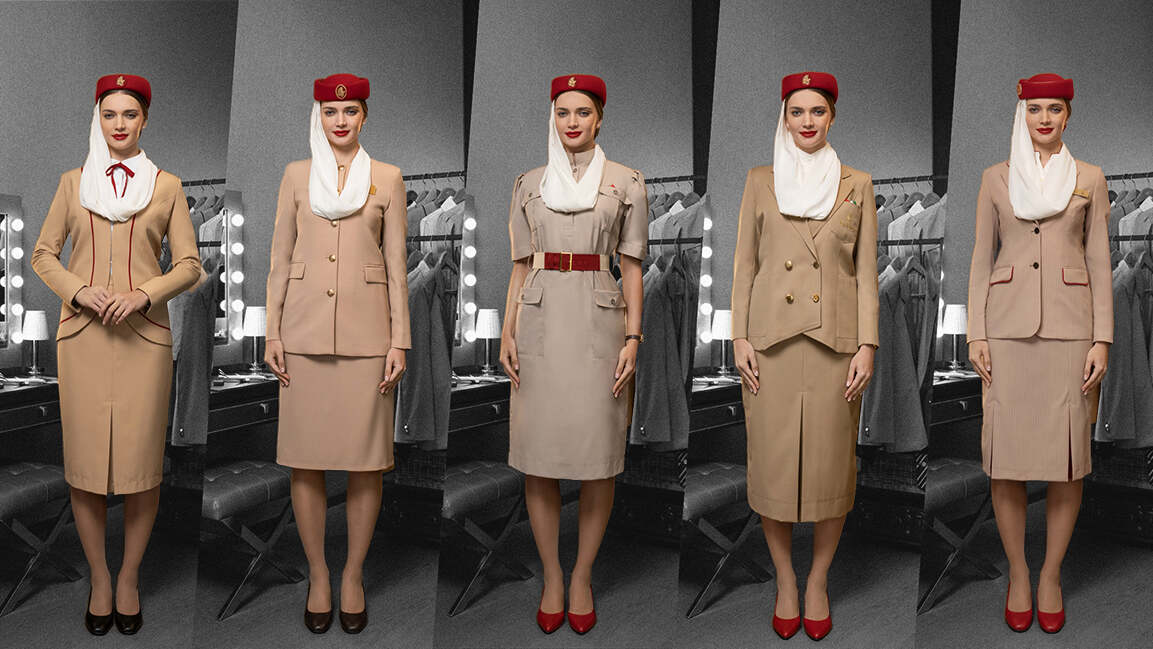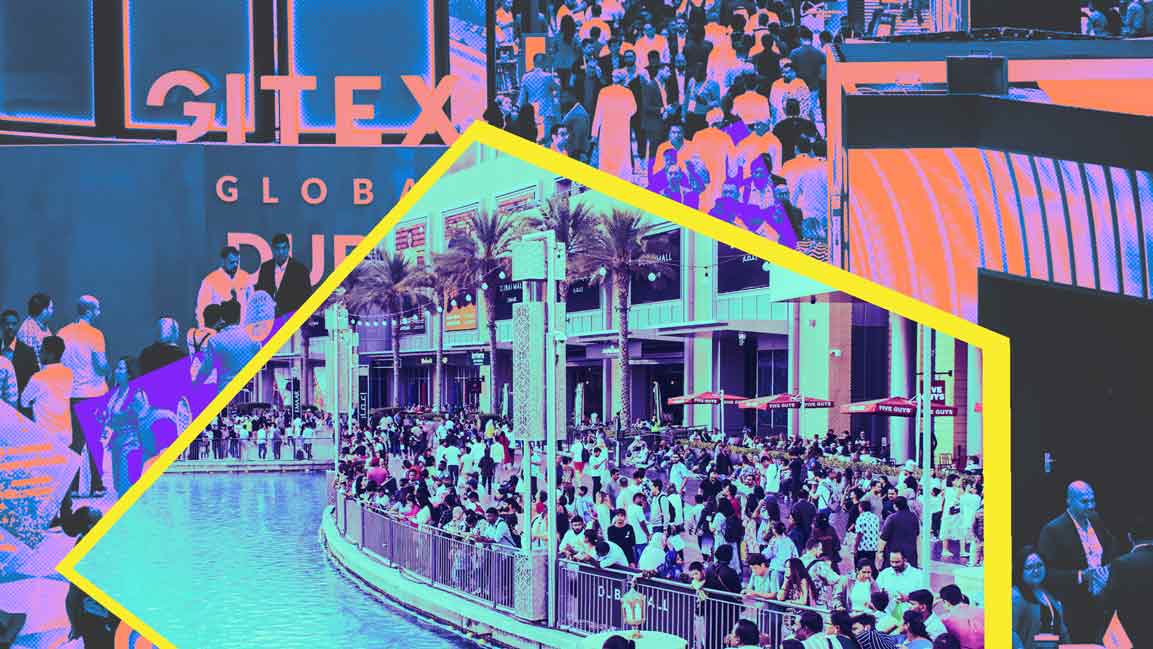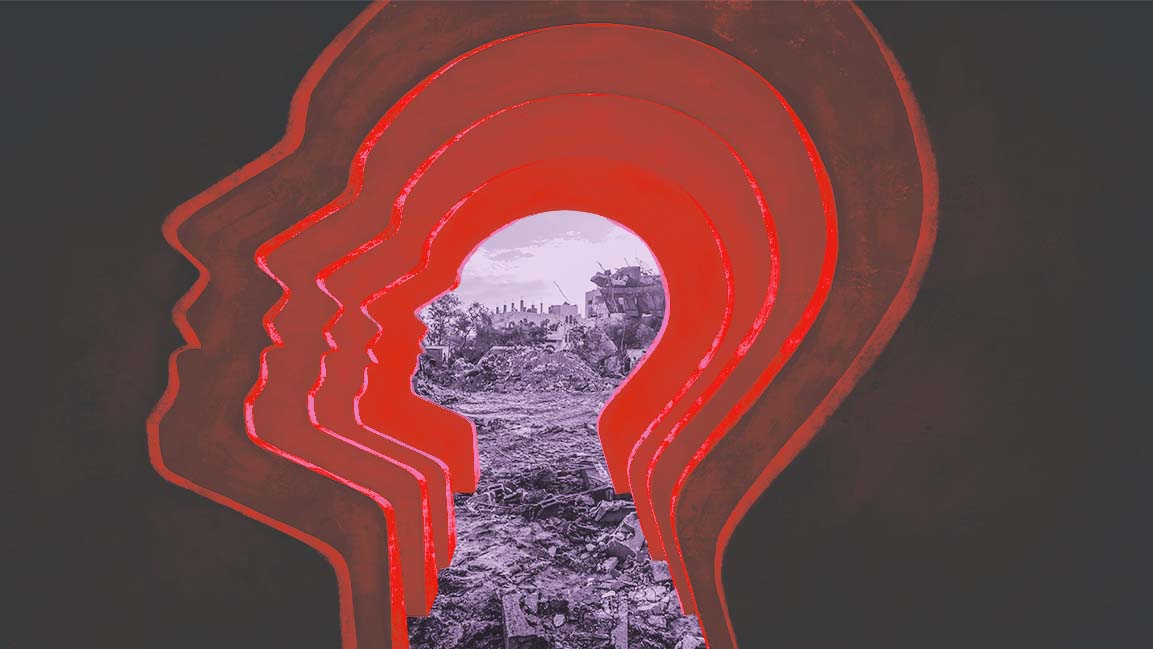- | 12:00 pm
The Emirates uniform reflects four decades of design and grace
For nearly four decades, Emirates’ cabin crew uniform has evolved in detail and design while preserving its iconic colors and form.

In less than half a century, Emirates has become one of the most recognizable names in aviation. Its rise has mirrored Dubai’s transformation, shaped by ambition, design, and a determination to look beyond convention.
Since its first flight in 1985, the airline has reshaped the experience of long-haul travel by focusing on comfort, service, and design. Every detail, from the cabin interiors to the onboard hospitality, reflects an approach that feels distinctly modern yet firmly connected to its origins.
That identity is perhaps most visibly expressed through the Emirates cabin crew uniform. Recognized worldwide, it captures the precision, grace, and quiet confidence that have long defined the airline. Over the years, it has evolved with subtlety, reflecting changes in fashion and culture while maintaining its familiar beige and red palette.
For nearly forty years, the Emirates cabin crew uniform has mirrored the evolution of the airline itself, from its early days in 1985 to its standing today as a global name in aviation and design. The beige and red ensemble has become an enduring emblem of the brand, recognized across airports and continents.
The Emirates uniform has remained remarkably timeless in an industry of constant change. Its details, such as the tailored lines, the draped scarf, and the familiar red hat, carry a story of continuity and refinement. Each iteration reflects a blend of heritage and modernity, shaped by the same ambition that continues to guide the airline’s journey.
A LOOK TAKES FLIGHT IN 1985
When Emirates launched in 1985 with just two leased aircraft and 80 cabin crew members, it was already thinking beyond the runway. Its first uniform, designed in shades of red and gold, marked the beginning of a visual identity that would become known worldwide.
The debut look combined warm, sandy-beige jackets with rounded borders and fine red piping, echoing sunlight tones on desert dunes. The silhouette reflected the style of the 1980s, with soft shoulder pads and clean tailoring that gave the uniform a confident yet refined presence. The palette was a nod to the UAE’s landscape, a subtle link between modern design and the spirit of home.
The ensemble was completed with a straight-cut skirt that fell just below the knee, a cream blouse fastened with a red ribbon, and the now-iconic red hat bearing the Emirates logo in elegant Arabic script. Draped from the hat was a cream chiffon scarf, its seven pleats symbolizing the seven Emirates — a small but thoughtful detail that connected design with cultural storytelling.
For the male crew and pilots, classic grey suits with red ties, white shirts, and gold insignia conveyed understated professionalism. Both men and women wore polished black leather shoes, completing a look that was sophisticated, deliberate, and built to endure. Even in its earliest form, the Emirates uniform captured the essence of the brand’s vision: modern, rooted in heritage, and designed to stand the test of time.
REFINEMENT AND CULTURAL NUANCE
Two years later, as Emirates expanded across Asia, Europe, and the Middle East, its uniform began to reflect a growing global confidence. The updated attire for female crew introduced a double-breasted beige jacket with gold buttons, paired with a longer pleated skirt that added movement and elegance.
Male crew members retained the original 1985 design, maintaining a sense of visual continuity within a team that had grown to 180 cabin crew. Both men and women carried a small pochette tucked neatly into their jacket pockets, a thoughtful accent symbolizing the flag of the UAE.
By the end of 1987, Emirates was flying to 11 destinations, including Amman, Mumbai, Cairo, Colombo, Delhi, Dhaka, Frankfurt, Istanbul, Karachi, London Gatwick, and Malé. As the network grew, designers began adapting the wardrobe to the realities of international travel. The “Summer Safari” dress, a lighter, more breathable option for warmer climates, became a staple for crews flying through tropical routes.
On select First Class services, female crew members wore the traditional Arabic thoub while serving Arabic coffee and dates, a graceful gesture that introduced travelers to the warmth and hospitality of Emirati culture.
A DESIGNER ERA
As Emirates’ network expanded through the 1990s, so did its sense of identity. In 1997, the airline turned to Spanish designer Paco Rabanne to reimagine its cabin crew uniforms, introducing a more refined and contemporary look that reflected its growing global stature.
Under Paco Rabanne’s influence, Emirates’ image became more sophisticated. The uniforms became sharper and more confident, reflecting an airline coming into its own on the global stage. The signature beige and red remained, but the cuts grew sleeker and the fabrics richer. Women wore slim-cut jackets with mandarin collars and jacquard logo prints, paired with brown leather accessories that added warmth and contrast. Men traded their grey suits for navy jackets and beige trousers, creating a modern look that echoed the minimalist style of the decade.
The redesign arrived at a pivotal moment in Emirates’ journey. By then, the airline was serving more than 44 destinations and carrying around three million passengers, steadily building a reputation for elegance both in the skies and on the ground.
REDEFINING THE CLASSIC
As Emirates prepared to welcome its first Airbus A380 in July 2008, it marked the milestone with a refreshed cabin crew uniform. Created by the airline’s in-house design team in collaboration with British workwear brand Simon Jersey, the update stayed true to the familiar beige-and-red palette while introducing subtle refinements for a modern era.
For the 11,000-strong cabin crew, the female uniform featured fine pinstripes and four kick pleats in the skirt that revealed flashes of Emirates red. Refined red trims ran through the tailoring, while the signature hat was reimagined with the Emirates logo positioned to the side in a wing-like motif. Accessories, including shoes, belts, and handbags, shifted to a deeper maroon, complementing the new design details.
Male crew members adopted a similar evolution in style, wearing chocolate-brown pinstriped suits accented with red and paired with cream shirts and striped ties in shades of gold, brown, and red. Together, the redesigned uniforms conveyed a polished, contemporary look mirrored Emirates’ expanding global presence and quiet assurance in its brand identity.
A MODERN EVOLUTION IN STYLE AND COMFORT
In 2023, Emirates introduced a new layer of personalization to its signature look, combining craftsmanship with comfort. The airline unveiled a bespoke footwear collection designed to meet the varied needs of its global cabin crew.
Female crew members can now choose from 15 shoe styles crafted in Spain from 100% leather. The range accommodates different heights, widths, and silhouettes, offering a tailored balance between comfort and refinement. The male crew also received upgraded handcrafted leather footwear designed for durability across long-haul journeys.
The refreshed shoe collection was paired with new accessories in a brighter, more vivid red—handbags and belts that echo the subtle red pleats of the skirt and the trims of the uniform. Together, these updates shift toward customization while retaining the timeless Emirates aesthetic.
Today, the uniform remains a symbol of design continuity and purpose. Worn by 25,000 cabin crew serving more than 140 destinations worldwide, it is a constant expression of the brand’s enduring poise in the skies.






































